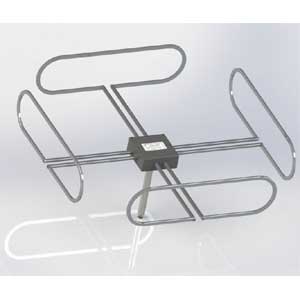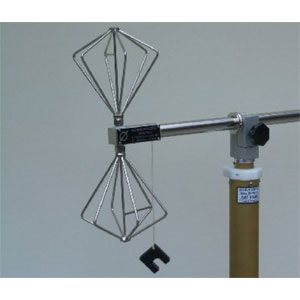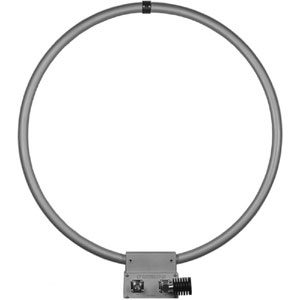Both for the measurement of Field Strengths and for the generation of defined Electromagnetic Fields (EMC) in the UHFrange 300 MHz to 1 GHz a number of different antenna systems may be useful: Tuneable Half-Wave Dipoles (UHA 9105), Precision Dipoles UHAP, Log. -Periodic Antennas (UHALP 9108 A, VULP 9118 andmore), Horn Antennas (BBHA 9120) and Standard Gain Antennas, and shown here, BICONICALS.
Gain Antennas reduce errors by unwanted reflections, but their disadvantage in most cases is the frequency-dependent phasecenter, due to a non-circular H-pattern the rayto the ground reflection point may be ofreduced intensity compared to the direct ray. Half-Wave Dipoles are often used as reference antennas. Their disadvantage with economical testing is the need for element adjustment with every frequency change (no automatic testing). In the VHF range theBiconical Broadband Antennas (BBA 9106 inholder/balun VHA 9103 or VHBA 9123) are in wide-spread use worldwide, they can be found on almost every antenna testing range or EMI/EMC Test Houses. With gain and antenna factor in the main frequency range (300-1000 MHz) they have similar gain and antenna factor figures as half-wave dipoles, but do not require any adjustment. They possess a circular H pattern and a fixed phase center, important for short test sites.





